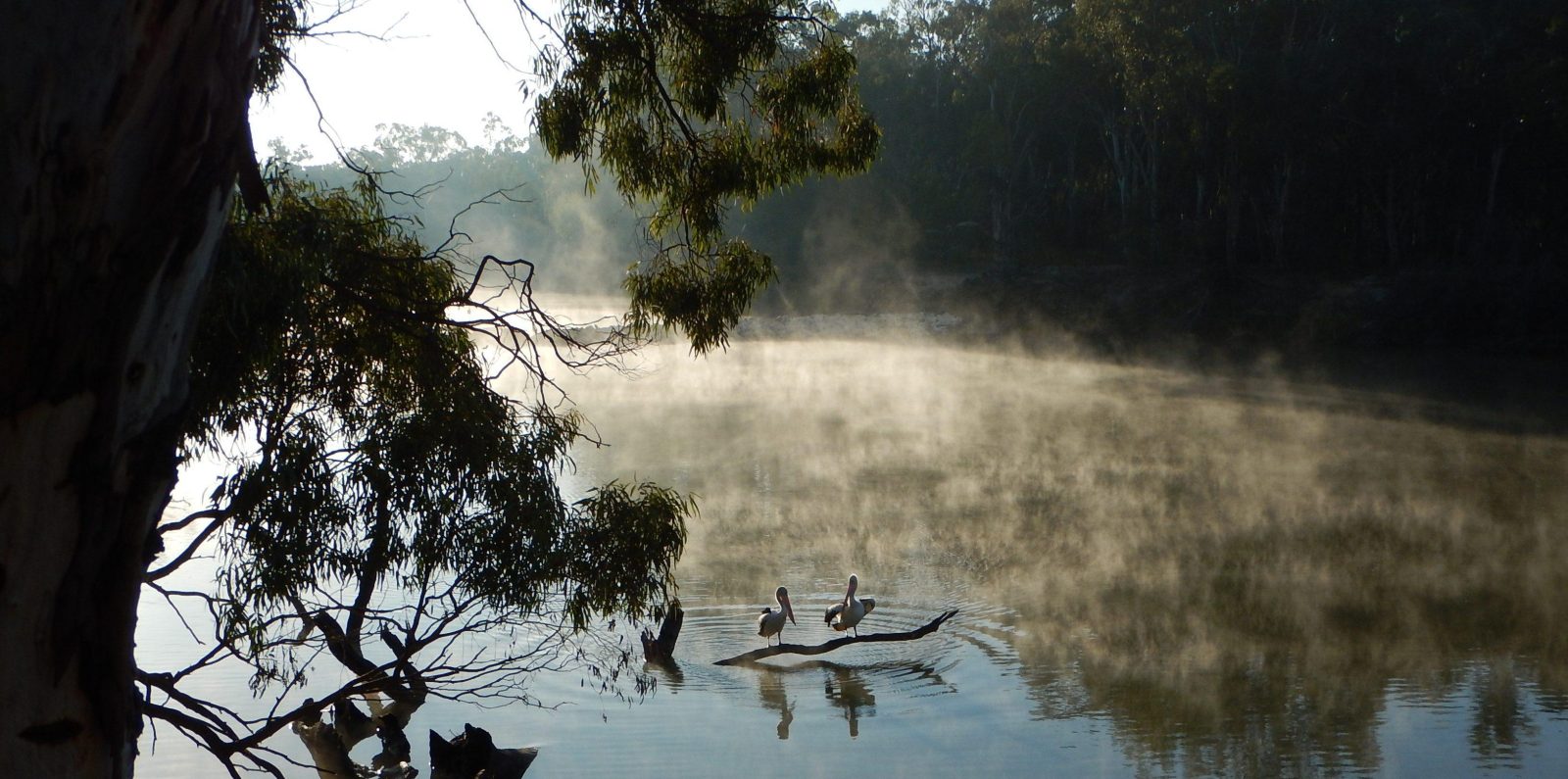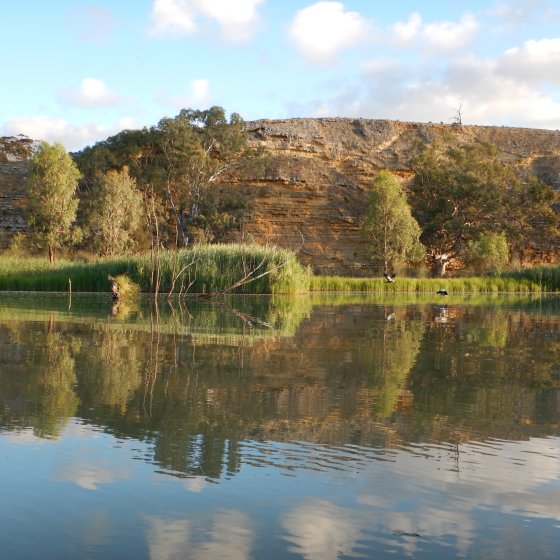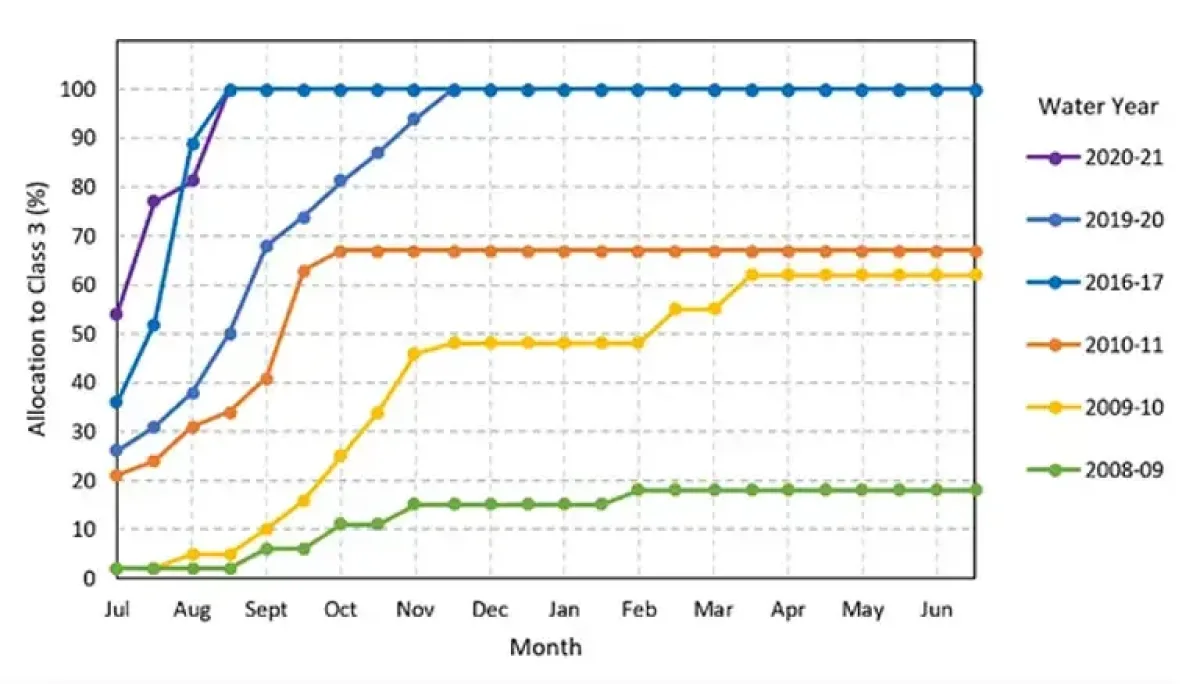- Home
- Environmental Themes
- River Murray
- What is Being Done
What is Being Done
Maintaining a healthy river system by reducing pressures and managing impacts is vital in South Australia to support healthy ecosystems and biodiversity, a sustainable water supply for the community and industry and all the other services it provides. The following section provides examples of how the River Murray, Lower Lakes and Coorong are managed and what research, projects and programs are being undertaken.
Management
- The Basin Plan is an historic, bipartisan agreement about how the water that flows down the nation's longest river system is managed to ensure its long-term health. It restricts the amount of water that can be taken from the Basin each year, to leave enough for the rivers, lakes and wetlands and the plants and animals that depend on them. The Basin Plan is being implemented in a partnership between the Murray–Darling Basin Authority (MDBA), the Australian Government and the governments of New South Wales, Queensland, South Australia, Victoria and the Australian Capital Territory. On 22 August 2023, the federal, New South Wales, South Australian, Queensland and the Australian Capital Territory governments came to an agreement to support amendments to the Water Act 2007 and the Basin Plan, and to deliver the Basin Plan in full. The Water Amendment (Restoring Our Rivers) Bill 2023 has now been passed by the Australian Parliament and amends the Water Act 2007 to enable voluntary water buybacks which will contribute to delivery of 450 GL for the environment each year by 2027, providing more time to complete SDL offset projects, and acknowledges First Nation people's connection, history and water needs.
- The MDBA is responsible for planning the Murray–Darling Basin's water resources including the implementation of the Basin Plan, with all planning decisions made in the interest of the Basin as a whole. The MDBA is currently preparing for the 2025 Basin Plan Evaluation, which will play a critical role in tracking and communicating progress against the outcomes set out in the Basin Plan and in identifying potential improvements to the Basin Plan. This will inform the 10-yearly review of the Basin Plan, which is due to take place in 2026.
- In South Australia, the Commissioner for the River Murray plays an important role in advocating for the health of the River Murray and delivery of the Basin Plan, thereby assisting the South Australian Government with improving the transparency of information provided about the management of the River Murray and in providing strategic advice to the South Australian Government on matters relating to the implementation of the Basin Plan.
- On 15 September 2023, the South Australian Government published its response to the Murray–Darling Basin Royal Commission Report. In the response, the South Australian Government has outlined its expectations and requirements for full delivery of the Basin Plan. The final section of the response lists all of the Royal Commission’s 44 recommendations together with a description of how the state government is addressing each recommendation and/or working to influence the responsible agency or government to address the recommendation.
- DEW is involved in the planning, delivery, monitoring, evaluation and reporting of water for the environment within the South Australian River Murray region in collaboration with other government agencies, research and non-government organisations, and community groups.
- Locks and barrages to manage water flows are operated by SA Water and water allocation from the River Murray is managed via the Water Allocation Plan for the River Murray Prescribed Watercourse administered under the Landscape South Australia Act 2019. The opening allocation for South Australian River Murray irrigators for the 2023–24 water year was 100%. Water allocations have increased progressively since the Millennium Drought.
- Department of Primary Industries and Regions South Australia is responsible for the management of the River Fishery, which operates in the River Murray and its backwaters.
- The National Carp Control Plan is still being considered as a mechanism to control carp populations in the River Murray and surrounds. However, research is showing that native fish populations are improving with the delivery of water for the environment, therefore providing greater competition for carp. Commercial opportunities for carp could be investigated to increase the numbers of carp that are removed from the river system.
- Water salinity in the River Murray is managed through the adoption of the Basin Salinity Management 2030 strategy. This strategy supports the management of salinity through the operation of salt interception schemes and encouraging the improvement of farming and irrigation practices to prevent extra salt from entering the river. South Australia is home to seven salt interception schemes.
- The River Murray flood did result in extensive damage to housing and infrastructure, which resulted in considerable costs to people and the government. Plan SA is currently reviewing planning rules to assist with the rebuilding process and mitigate the impacts of future River Murray flood events.
- The Planning and Design Code became fully operational in 2021, including policies relating to:
- a range of overlays protecting key environmental assets, such as the River Murray, including referrals to relevant South Australian Government agencies
- improved hazard mapping through the creation of overlays for terrestrial flooding and acid sulfate soils.
- The EPA assesses and regulates discharges of pollutants to the river, including from vessels such as houseboats, slipways, dredging and septics.
- The Murray–Darling Basin Authority undertakes reporting on various regions along the River Murray. The Living Murray icon sites report cards for the South Australian sites are as follows:
- Chowilla Floodplain – Overall site condition is considered good (2021–22) with water for the environment providing important refuge for birds and frogs in an otherwise dry landscape. While the condition of fish and frogs at the site had improved remarkably, some vegetation condition and the ability to sustain waterbird breeding events was still limited in that year.
- Lower Lakes, Coorong and Murray Mouth – Overall site condition is considered good (2021–22) with water for the environment delivered over consecutive years and improving the health of the plants of the Lower Lakes and providing conditions for native fish to move between the River Murray and the Southern Ocean.

Research, Projects and Programs
- The Murraylands and Riverland Landscape Board carries out a range of activities and restoration programs that contribute to the management and protection of the River Murray, Coorong and Lower Lakes, including management of wetlands and floodplains, restoration programs, education, and research and monitoring.
- Project Coorong and the Healthy Coorong, Healthy Basin program aim to undertake activities that contribute to the ecological recovery of the Coorong, including potential long-term management solutions for the supply of water to this unique environment. This includes a Coorong Restoration Roadmap, for which consultation has just been completed and which sets out key processes and principles to restore the Coorong.
- The Goyder Institute for Water Research carries out research that informs the protection and management of the health of the River Murray and Coorong under their Water for the Environment research program.
- Monitoring and research continues to identify impacts the 2022–23 flood had on ecosystem health. In addition, the One Basin Cooperative Research Centre and the Coorong, Lower Lakes and Murray Mouth Research Centre have both been funded by the Australian Government to support critical research needs.
- The South Australian Research and Development Institute undertakes research on inland waters including the River Murray, often in collaboration with state and federal government management and research agencies, universities and cooperative research centres. Research programs include those for fish and plant ecology, invasive species, and ecosystems and resources.
- The Australian Government released the Restoring our Rivers: Draft framework for delivering the additional 450 GL and opened the Resilient Rivers Water Infrastructure Program. The Australian Government is proposing to establish the following 3 new programs to deliver the 450-GL target under the framework:
- Resilient Rivers Program – includes infrastructure projects, rules changes, land and water partnerships, and other ways to recover water.
- Voluntary Water Purchase Program – involves the purchase of water entitlements from willing sellers.
- Sustainable Communities Program – adjustment assistance for Basin communities impacted by voluntary water purchase.
- The Resilient Rivers Water Infrastructure Program opened to applications on 30 January 2024. It provides a pathway for Basin states to propose water saving, efficiency measures projects for funding and replaces the Off-farm Efficiency Program.

